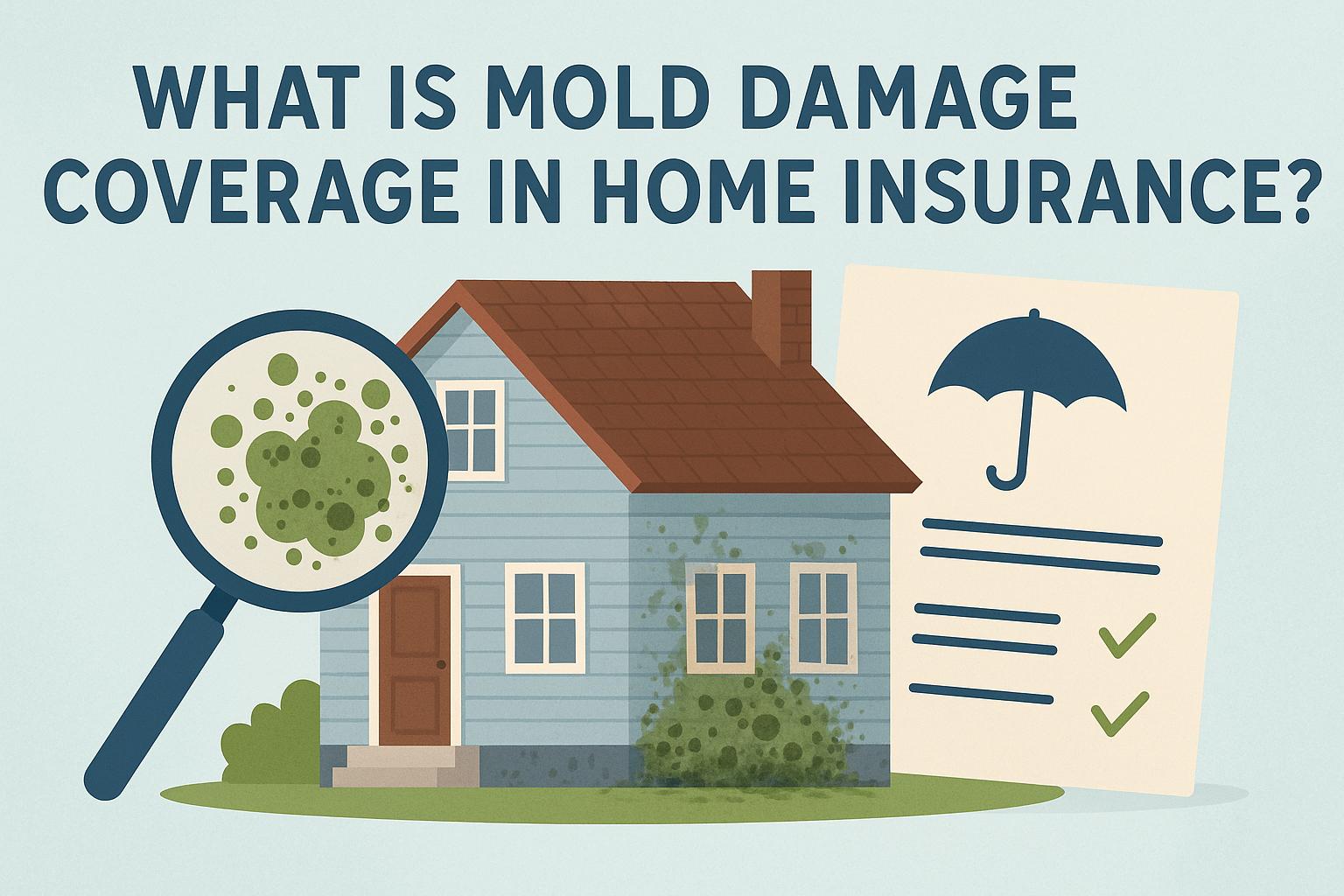Mold Damage Coverage in Home Insurance
The presence of mold in residential spaces is a significant concern for homeowners. Mold is not just an aesthetic issue; it harbors potential risks to both the infrastructure of the home and the health of its inhabitants. Consequently, the manner in which mold damage is addressed through home insurance becomes an essential consideration for property owners. Below, we delve into the complexities of how mold damage is generally interpreted within various insurance policies and what homeowners should know to ensure their homes and finances are adequately safeguarded.
Basic Coverage for Mold
When evaluating how mold damage is tackled in insurance policies, it’s vital to start with basic coverage provisions. Most standard home insurance packages do offer a rudimentary level of assistance for mold-related issues. However, the specifics are generally constrained. Coverage usually kicks in only if mold infestation is a direct outcome of a particular peril that is already stipulated in the policy. For example, if a burst pipe results in water damage, which subsequently leads to mold, the insurance might cover the mold issue because it stemmed from the insured peril.
Homeowners are advised to scrutinize their specific insurance agreements to establish what scenarios are encompassed and under which conditions. Being alert to these details can prevent unwelcome surprises when an insurance claim is filed.
Limitations and Exclusions
While some coverage for mold damage might be present, several limitations and exclusions are inherent within most insurance documents. Insurers tend to list these exclusions explicitly, as they help manage the scope of claims they find justifiable. Damage emerging from prolonged dampness due to ongoing issues, like leaking roofs or inadequate ventilation, generally finds itself excluded.
Understanding these limitations not only aids in tailoring expectations appropriately but also assists in averting unanticipated expenses. Without this understanding, homeowners may end up blindsided when coverage is denied.
Common Exclusions
Several exclusions are more prevalent when dealing with mold coverage in home insurance:
- Gradual Water Damage: Mold that results from slowly evolving water damage, such as that from an inconspicuously dripping faucet, usually is ineligible for insurance payouts.
- Negligence: Should mold growth result from the homeowner’s own inactivity or neglect—such as overlooking routine maintenance—the policy will typically not extend coverage.
Endorsements and Additional Coverage Options
For those who find the basic coverage insufficient, a number of insurance companies provide the option to enhance their policies with endorsements targeting mold. These endorsements can significantly bolster your mold coverage, raising the limits for remediation efforts or offering protection against risks that a standard plan fails to consider. This additional level of coverage can be indispensable for properties in regions prone to conditions conducive to mold growth.
Before adding such endorsements, however, homeowners should perform a cost-benefit analysis to determine the practicality of additional premiums in exchange for extended coverage.
Steps to Take if You Have Mold Damage
If you discover mold damage within your home, the steps you take can influence the outcome of your insurance claim substantially:
- Document the Damage: Comprehensive documentation is key. Take clear, detailed photographs and compile a list of impacted items and areas within your home.
- Contact Your Insurer: Prompt communication with your insurance provider is crucial. Inform them of the damage as soon as possible to initiate the claims process.
- Mitigate Further Damage: Engage in efforts to curtail further mold propagation. This might involve temporary fixes, like dehumidification. Neglecting this can negatively impact the resolution of your claim.
These steps are not merely procedural; they are practical actions that support both insurance requirements and the imminent care of your property.
Preventive Measures
In dealing with mold, prevention is unquestionably more efficacious than dealing with its aftermath. Implementing preventive strategies is a wise approach. Ensure that your home is well-ventilated, particularly in areas like bathrooms and kitchens where moisture accumulates. Address leaks at once to stave off moisture buildup. Where possible, employ the use of dehumidifiers to manage humidity levels, especially in basements or other inherently damp environments. Such proactive measures are beneficial not only in preserving the physical integrity of your home but also in circumventing situations that might not be eligible for insurance reimbursement.
Conclusion
Navigating the intricacies of mold damage coverage within home insurance policies can appear daunting due to the limitations and complexities involved. Policies can differ greatly, and the extent of coverage often depends on the precise conditions and terms set forth in your specific agreement. For those seeking broader and more inclusive protection, pursuing policy endorsements could offer a viable solution.
Engage in discussions with your insurance provider about other potential coverage options that might better suit your needs. For those requiring more in-depth insight or guidance on these matters, exploring authoritative online resources or forums where industry standards and expectations are discussed can be beneficial. Consultations with your insurance agent or provider are recommended to fully comprehend the nuances of your policy and to ensure that you aren’t caught off guard by potential pitfalls. For additional research or to explore insurance standards further, official resources are available online, such as at the National Association of Insurance Commissioners (NAIC).
Ultimately, being informed and prepared equips homeowners to better manage potential mold issues effectively, both from maintenance and insurance perspectives.
